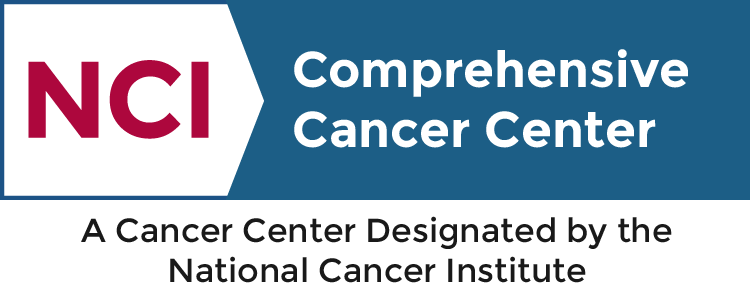Advancement in cancer care can only happen through the clinical trial process. Around 250 cancer clinical trials are taking place at Stanford at any given time. If you are diagnosed with cancer, take the time to learn more about clinical trials. Ask your doctor if a trial is right for you.
Clinical Trials
Frequently Asked Questions
General Overview
Clinical trials are scientific studies that involve people in research and are the only way to advance cancer treatment. Before people are given a new intervention, it is carefully studied in the laboratory. Studies with the most promising results are then moved into clinical trials with people. Clinical trials are used to evaluate new and better ways to treat, prevent, detect, diagnose, and manage symptoms of cancer.
Most treatments we use today are the result of past clinical trials. Due to progress made through clinical trials, many people with cancer are living longer. One way to gain access to promising new interventions is to participate in a clinical trial. If you are diagnosed with cancer, ask your doctor about clinical trials.
- Treatment: These trials test how well new treatments or new ways of using current treatments work in people who have cancer. Treatments can include drugs, surgery, radiation, or vaccines, among others.
- Prevention: These trials test new ways that may lower peoples' risk of getting cancer.
- Screening: These trials test new ways of finding cancer early. When cancer is found early, it can be easier to treat and sometimes cure.
- Diagnostic: These trials study new tests or procedures that may help identify, find, or diagnose cancer better.
- Quality of life/Supportive care: These trials focus on improving the quality and comfort of patients and cancer survivors' lives. For example, new ways to decrease the number of side effects of cancer or its treatment may be studied.
Clinical trials are conducted in phases. Each phase is designed to answer specific scientific questions:
Phase 1 trials are conducted to find out what is the best dosage of a new intervention that can be given safely without serious side effects. The first few people in the study often get a low dose of the treatment and are watched very closely. If there are no side effects or only minor side effects, the next few patients may receive a higher dose. This process is repeated until doctors find the dose that's most likely to work while having an acceptable level of side effects.
Once the best dosage and dose schedule [how often a drug is given (i.e. once per day, twice per day, once per week, etc.)] are found, the trial may move into phase 2
Phase 2 trials are conducted to see if an intervention is effective (does it work?). Participants are given the optimal dose of a new intervention that is thought to be reasonably safe. This dose and schedule are based on results from phase 1 trials. If the intervention appears helpful, the study may move into phase 3.
Phase 3 trials are conducted to see if the new intervention is better than the current standard of care treatment. Phase 3 study participants are assigned to either receive the new intervention (called the study group) or the standard of care intervention (called the control group) so that researchers can compare which intervention works best.
Participants have a 50:50 chance (like a flip of a coin) of ending up in one group or the other. Sometimes neither you nor your doctor will know which treatment you are receiving until the study ends; this is called blinded randomization.
Cancer Staging describes the extent of your cancer based on the cancer size and whether or not the cancer has spread to other parts of the body.
Staging helps doctors to plan appropriate treatments and to identify clinical trials that may be suitable for you.
One way to gain access to promising new treatments is to participate in a clinical trial.
Although clinical trial participation may not always be beneficial, past research suggests that it may be as good as or better than the current standard of care. Remember, the current standard of care is the result of past clinical trials, and a new research intervention may become the future standard of care.
Patients who receive cancer care are benefiting from past clinical trial participants. By being in a clinical trial you help advance cancer medicine and help future patients.
All clinical trials have risks. For instance, receiving a new treatment as a study participant may
- Cause unknown side effects or other risks, which may or may not be worse than those from existing standard of care treatments;
- Not work for you, even if it helps others; or
- Create inconveniences such as more frequent office visits and testing as well as time and travel commitments.
Consent process
Before agreeing to participate, you will be asked to review and sign an informed consent document with your doctor. The consent form will detail study purpose, procedures, and possible risks and benefits of participation.
If new benefits, risks, or side effects are found during the course of the trial, you will be told of them so you can decide whether or not to continue participation.
Taking part in a clinical trial is voluntary at all times. You can choose to stop participating at any time for any reason. Your health care providers will continue to care for you according to current best practices and highest standards of care, whether or not you continue study participation.
Oversight
Local, federal, and international laws protect clinical trial participant safety, rights, and privacy. In addition, several oversight committees approve and routinely monitor trials to make sure that participant rights and safety are protected. These committees have the authority to shut down a trial if it is deemed unsafe.
You should ask many questions so you can best decide if joining a trial is right for you. Here are some questions you may want to consider:
Comparing your options
- What are all of the treatment options available to me?
- Why do doctors think this trial may be better than the standard of care?
- What are the risks and benefits of the clinical trial and how does that compare with my current treatment?
About a specific trial
- Why is this trial being done?
- What sorts of tests, procedures, or treatments are involved in the trial?
- Is the trial randomized?
- What should I know about the financial cost of participation?
- Who will be in charge of my care?
- What will happen if I choose to stop participating in the trial?
- What else should I know about this trial?
Daily life
- How will the trial affect my daily life?
- How many visits will I need to make?
- How long will I be on the trial?
- How can I get an interpreter if needed?
There are several types of costs:
- Routine care costs occur whether or not you are in a clinical trial. Health insurance typically covers the cost of routine care. However, you are responsible for any co-payments and/or deductibles.
- Research costs for the research portion of a trial are paid for by the trial itself at no cost to you.
- Additional costs, such as personal time and travel expenses, may or may not be covered by a clinical trial.
Please be aware that each trial is unique. The study team will go over the cost of participation with you before you agree to enroll.
Intervention: An intervention may be a new treatment for cancer, such as a new drug. However, interventions may also help diagnose, prevent or screen cancer.
Dose schedule: How often a drug is given (i.e. once per day, twice per day, once per week, etc.).
Extent: Extent refers to the severity of the cancer. A primary tumor is where the cancer first appeared in your body. The cancer may spread to other parts of the body to form new, secondary tumors; this is called metastases.
To look up more words, see the National Cancer Institute Dictionary of Terms.
Trials at Stanford
You can find Stanford cancer clinical trials through one or more of the following options.
- Search engine (use "more search options" for advanced search: conditions, eligibility)
- Mobile app | iOS | Android
- Contacting our office 650-498-7061, ccto-office@stanford.edu
For more detailed guidance:
Here are steps to finding out if you are eligible for cancer clinical trial participation. For more information, please see the Stanford Enrollment Steps handout.
- Identify a clinical trial of interest through one or more of the following options.
- Eligibility Flowcharts
- Select the appropriate category.
- Then, select the appropriate sub-category or condition.
- Conditions and Keyword Search Engines
- Search by “Conditions”
- Conduct a “Keyword" search
- Mobile search app: Google Play | iTunes
- Eligibility Flowcharts
- Read the “Eligibility” section on the study web page after selecting a trial of interest.
- To participate you must fit the study guidelines (called inclusion and exclusion criteria). These usually relate to age and gender, cancer type and stage, other medical conditions you may have, and past treatments you have received.
- If you need more study information, call or email the study contact, who is listed on the study web page.
- The study research team will determine whether or not you are eligible to participate. This is typically conducted through a second opinion with the study physician.
- Get medical advice If you can’t decide which study is appropriate. To do this:
- Discuss the clinical trials with your oncologist, or
- Make an appointment for a second opinion with a Stanford Health Care oncologist to discuss all potential treatment options, which may include clinical trials. Below are ways to make an appointment for a second opinion.
- In-person second opinion: 650-498-6000.
- Online Second Opinion
- Health insurance plans accepted by Stanford Health Care
- Health insurance plans accepted by Stanford Children's Health
Stanford Health Care patients
- Stanford Health Care Financial Assistance | Financial Counseling | Medicare
- Stanford Children's Health Financial Assistance



